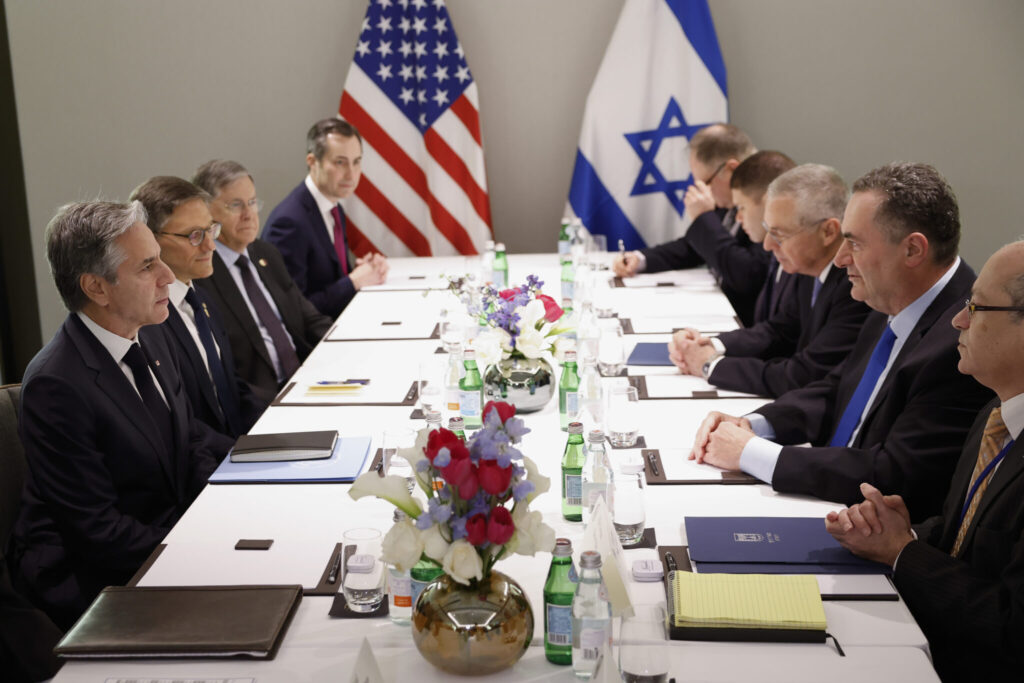U.S. Secretary of State Antony Blinken faced tough talks with Israeli leaders on Gaza’s post-war future Tuesday, while Israel’s military pushed ahead with its offensive in the beleaguered territory. Heavy bombardment and fighting shook refugee camps, sending Palestinians scrambling to find safety and hampering aid groups’ efforts to get relief to the population.
Quick Read
- Tough Talks for Blinken in Israel: U.S. Secretary of State Antony Blinken faces challenges discussing Gaza’s future with Israeli leaders.
- Continued Israeli Offensive: Heavy fighting and bombardment in Gaza despite diplomatic efforts.
- Arab Nations and Turkey’s Promise: Commitment to help rebuild Gaza, but demand an end to the fighting and steps towards a Palestinian state.
- Division Over Gaza’s Governance: U.S. proposes Palestinian Authority control; Israel rejects but lacks a concrete plan.
- Tensions with Hezbollah: Increased hostilities between Israel and Hezbollah, including drone exchanges.
- Blinken’s Goals: Focus on the way forward, including preventing an all-out war with Hezbollah.
- Casualties in Gaza: Hundreds of Palestinians killed daily; Israel determined to continue offensive.
- Destruction in Northern Gaza: Israeli military claims dismantling of Hamas infrastructure; ongoing fighting in refugee camps.
- Mass Displacement: Majority of Gaza’s population displaced; critical shortages of food and water.
- Humanitarian Aid Challenges: Fighting impedes aid delivery; U.N. facilities affected.
- Spiraling Israel-Hezbollah Tensions: Retaliatory attacks following the killing of Hamas and Hezbollah leaders.
- Blinken’s Mideast Tour: Fourth visit to address Gaza’s post-war reconstruction and governance, involving key regional players.
The Associated Press has the story:
In Israel, Blinken looks to planning for post-war Gaza as bombardment continues to rage
Newslooks- TEL AVIV, Israel (AP) —
U.S. Secretary of State Antony Blinken faced tough talks with Israeli leaders on Gaza’s post-war future Tuesday, while Israel’s military pushed ahead with its offensive in the beleaguered territory. Heavy bombardment and fighting shook refugee camps, sending Palestinians scrambling to find safety and hampering aid groups’ efforts to get relief to the population.

Blinken said he was coming to Israel with promises from four Arab nations and Turkey to help in rebuilding Gaza after the war. But those nations also want to see an end to the fighting in Gaza and concrete steps toward the eventual creation of a Palestinian state alongside Israel, something Israel Prime Minister Benjamin Netanyahu has vowed not to allow.
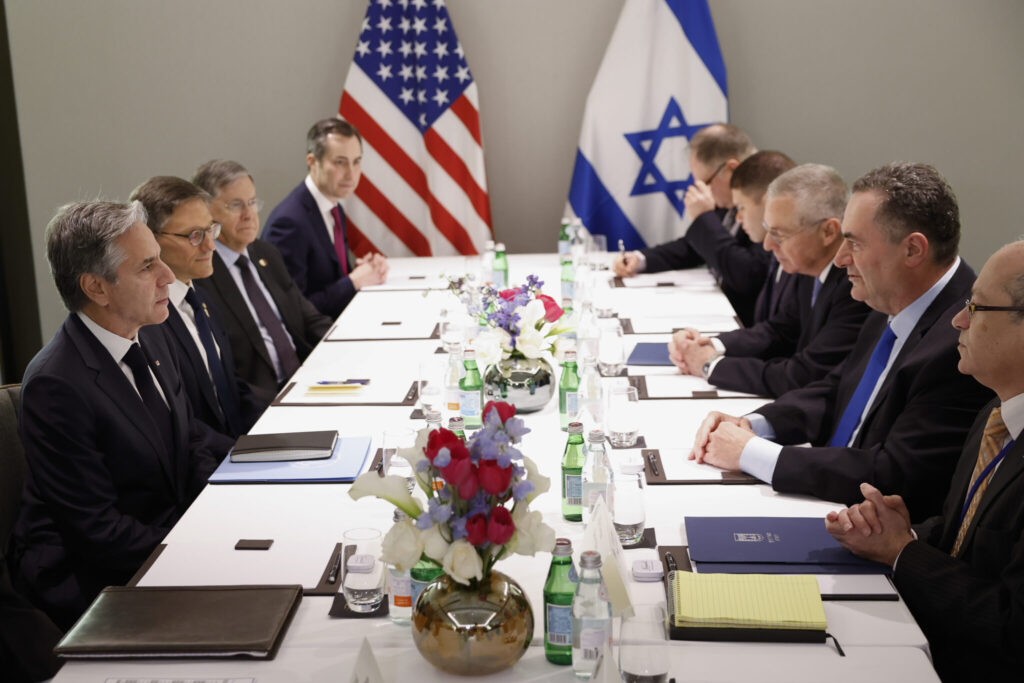
The U.S. and Israel also remain deeply divided over how Gaza will be run when — and if — its current Hamas rulers are defeated. American officials have called for the Palestinian Authority, which currently governs parts of the Israeli-occupied West Bank, to take the reins in Gaza. Israeli leaders have rejected that idea but haven’t put forward a concrete plan beyond an open-ended military control over the territory.
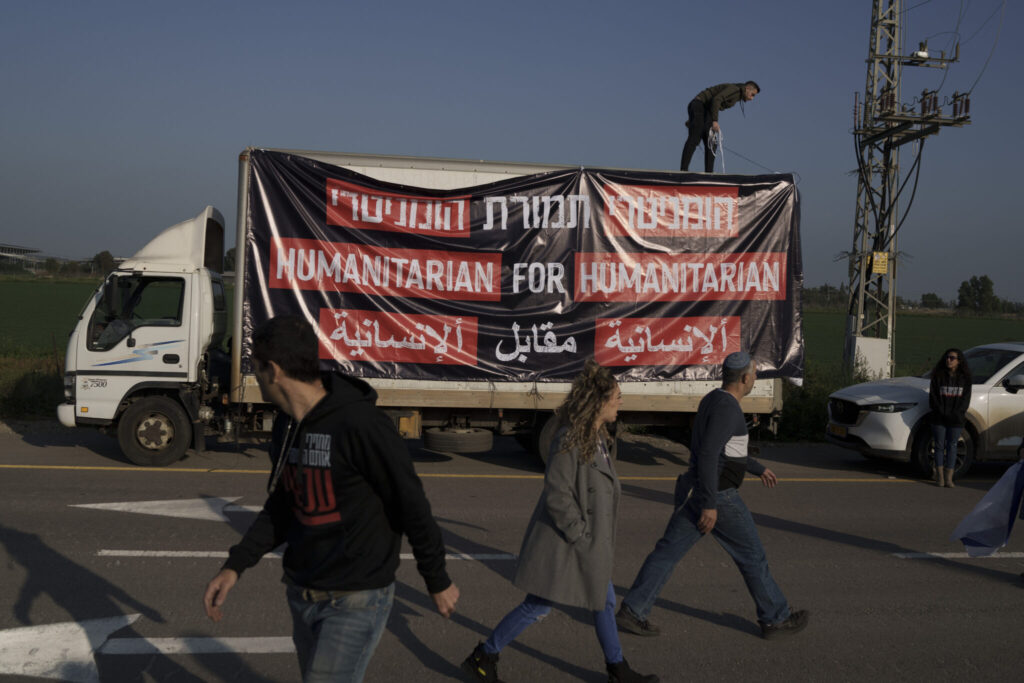
At the same time, Blinken is trying to prevent an all-out war between Israel and Lebanon’s Hezbollah. After a presumed Israeli strike last week hit Beirut, killing Hamas’s deputy leader, the two sides have stepped up their exchanges. On Tuesday, Hezbollah said its exploding drones targeted the Israeli army northern command in the town of Safed — deeper into Israel than previous fire by the group. The Israeli military said a drone fell at a base in the north without causing damage, suggesting it had been intercepted. It did not identify the base.
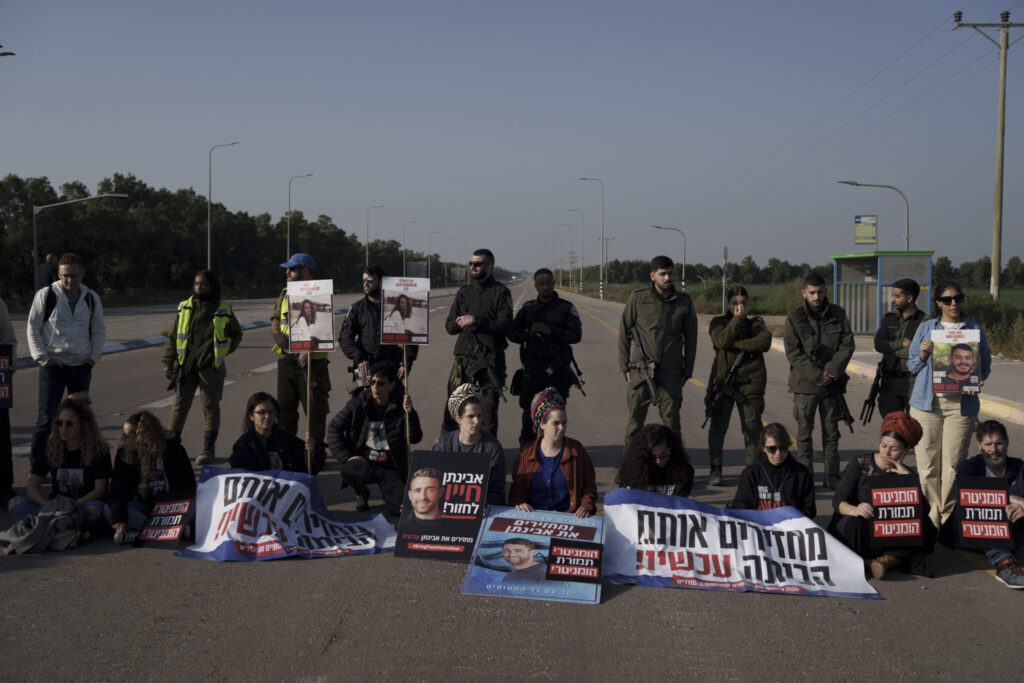
“There is lots to talk about, in particular about the way forward,” Blinken said after meeting Israeli President Isaac Herzog.
The United States has pressed Israel to scale down its offensive in Gaza to more precise operations targeting Hamas. But the pace of death and destruction has remained largely the same, with several hundred Palestinians killed a day, according to health officials in Gaza. Israel has vowed to keep going until it has destroyed Hamas throughout the territory, in response to the Oct. 7 attack during which militants killed some 1,200 people, mainly civilians, in southern Israel and kidnapped around 250 others.
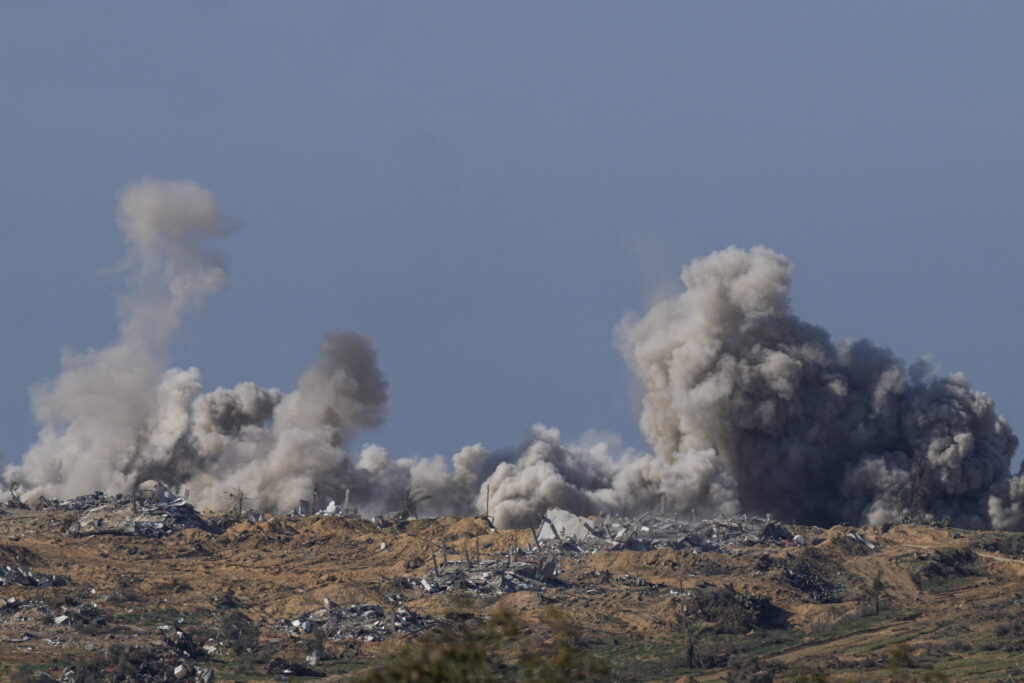
Still, after three months of fighting, Hamas continues to put up a fierce fight.
The Israeli military says it has dismantled Hamas infrastructure in northern Gaza, where large swaths of the cityscape have been demolished. But fighting continues there against what Israel says are pockets of militants. The offensive’s focus has shifted to the southern city of Khan Younis, where ground troops have been fighting militants for weeks, and a number of urban refugee camps in central Gaza.
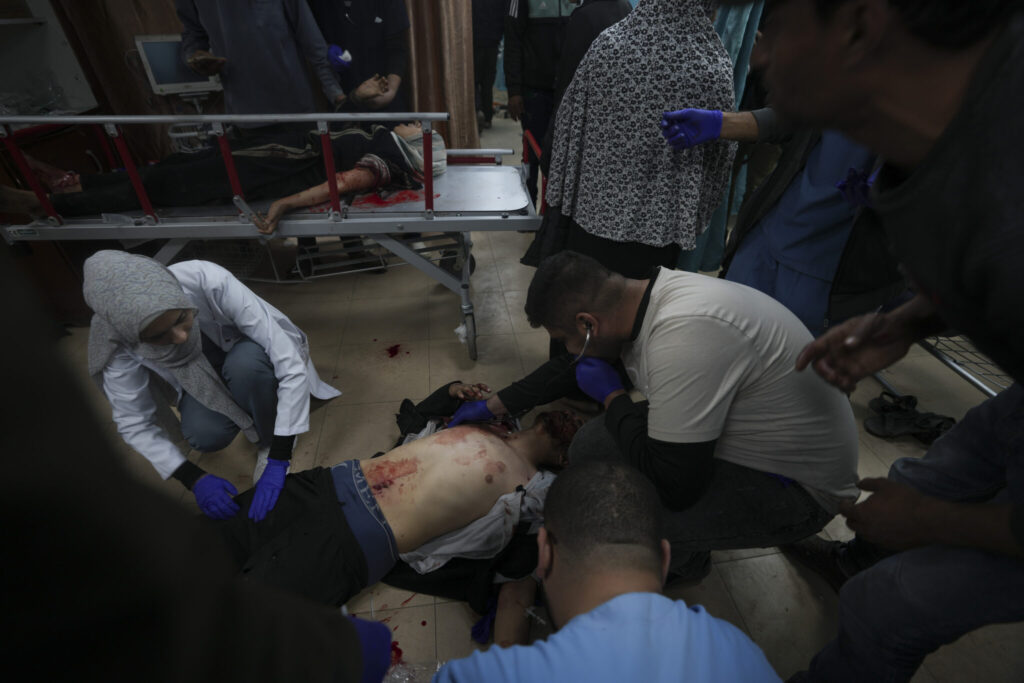
“The fighting will continue throughout 2024,” military spokesman Daniel Hagari said.
Since the war began, Israel’s assault in Gaza has killed more than 23,200 Palestinians, about two-thirds of them women and children, and more than 58,000 have been wounded, according to the Health Ministry in Hamas-run Gaza. The death toll does not distinguish between combatants and civilians. Nearly 85% of Gaza’s population of 2.3 million have been driven from their homes by the fighting, and a quarter of its residents face starvation, with only a trickle of food, water, medicine and other supplies entering through an Israeli siege.
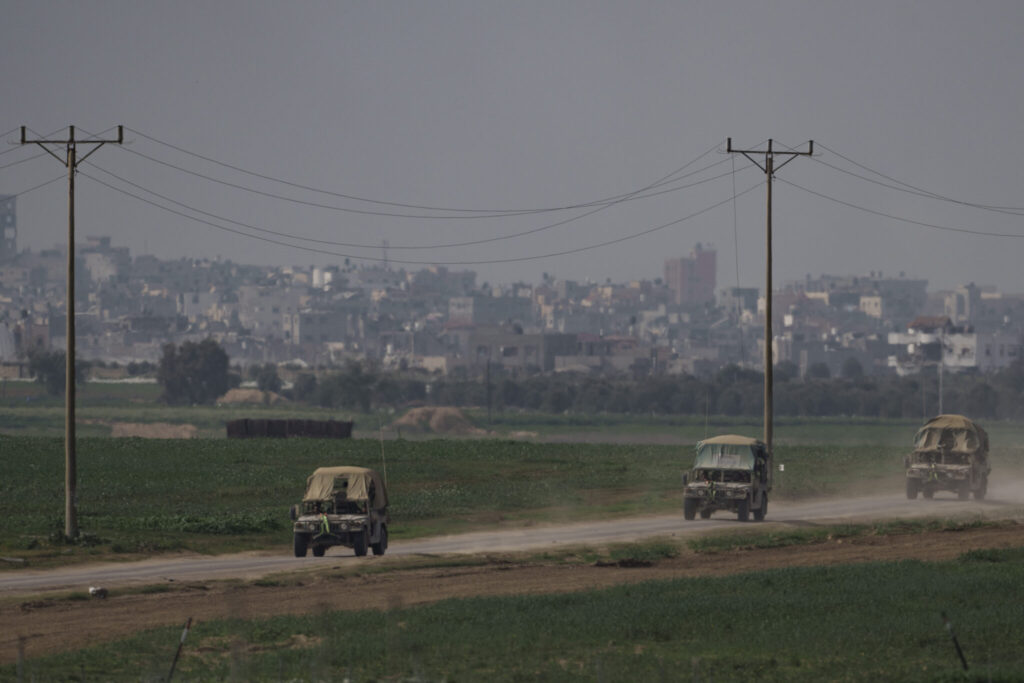
Throughout the night and into Tuesday morning, warplanes struck multiple areas in and around Khan Younis. Israeli artillery shelling and gunfire echoed through the Nuseirat refugee camp in central Gaza, where troops have been pushing in from the north, said one resident, Saeed Moustafa. They were facing heavy resistance from gunmen in the camp, he said.
Like other refugee camps in Gaza, Nuseirat was built to house Palestinians driven out of homes during the 1948 war surrounding Israel’s creation, and over the decades it has been built up into a densely populated town housing refugees and their descendants.
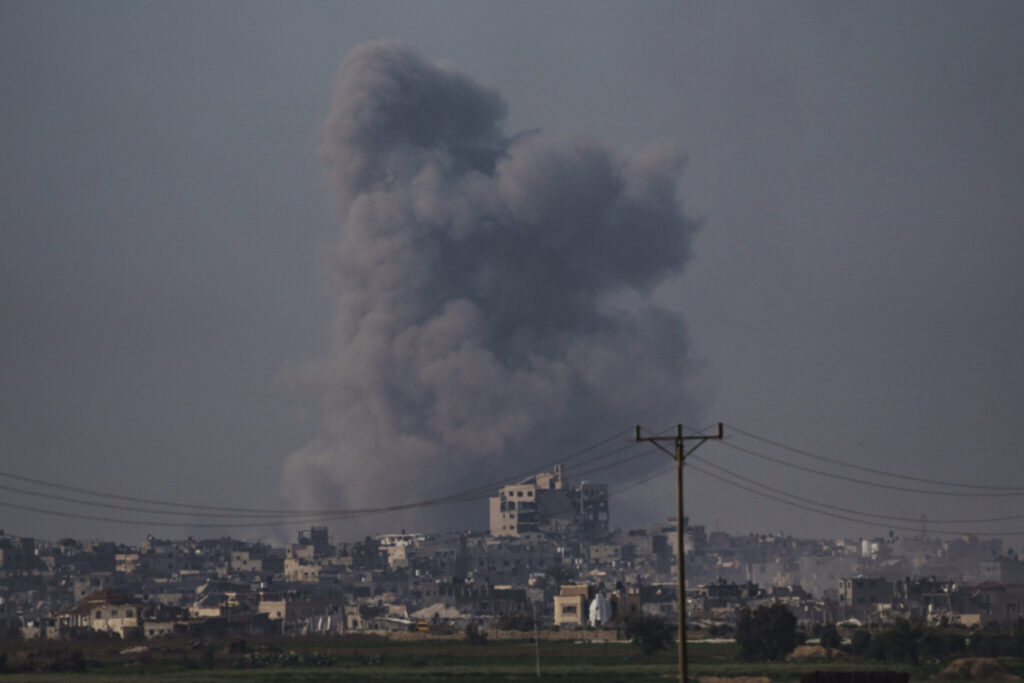
Families in Nuseirat’s northern neighborhoods were fleeing to other parts of the camp, Moustafa said by phone, with the sound of sporadic gunfire in the background. Some tried to head south on the Gaza’s main north-south road but found it blocked by Israeli tanks and turned around, he said. In leaflets, the military had told people evacuating to use another road, along the coast.
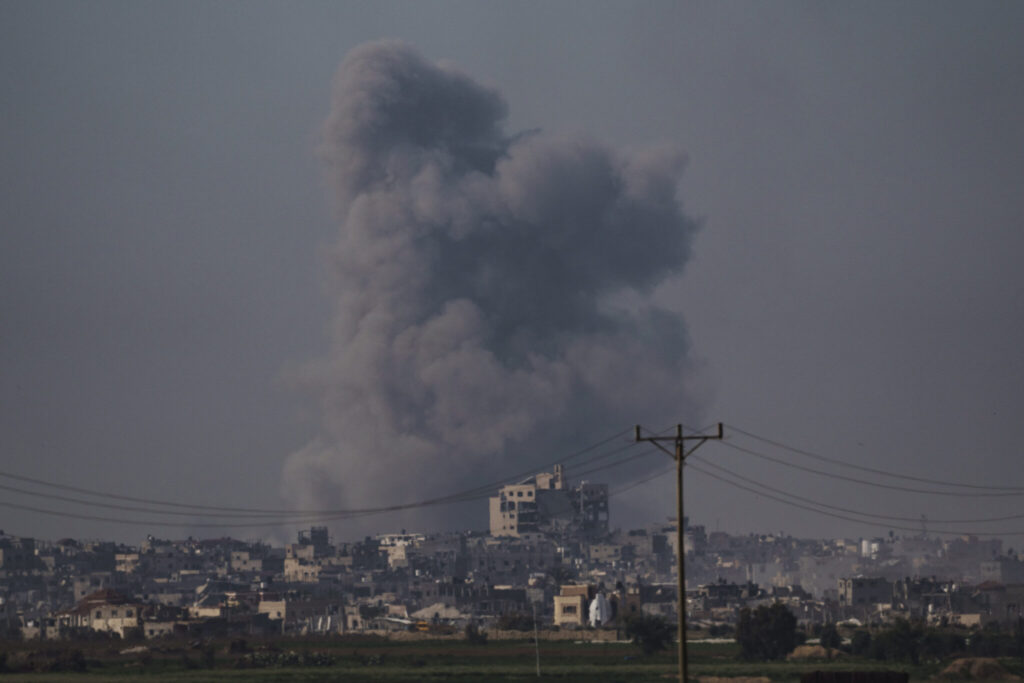
The U.N. humanitarian office, known as OCHA, warned that the fighting was severely hampering aid deliveries. Several warehouses, distribution centers, health facilities and shelters have been affected by the military’s evacuation orders, it said. Some bakeries in the central city of Deir al-Balah have been forced to shut down. A U.N. warehouse was hit last week, killing a staffer, and five other staffers were detained by the military, with two still held.
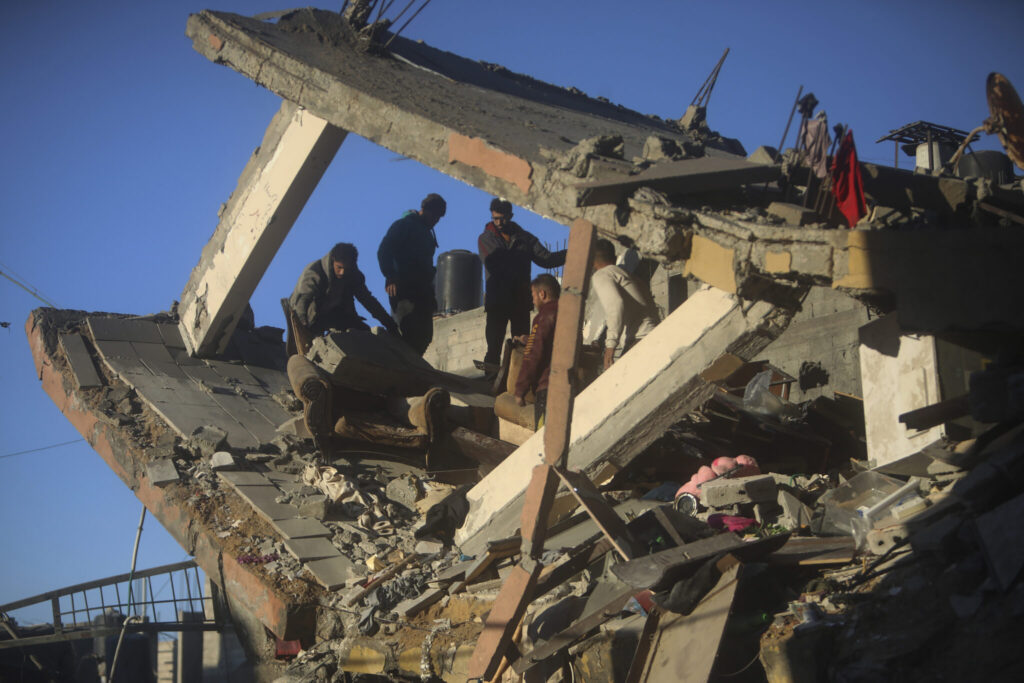
The situation is even more dire in northern Gaza, which Israeli forces cut off from the rest of the territory in late October. Tens of thousands of people who remain there face shortages of food and water.
The World Health Organization has been unable to deliver supplies to the north for two weeks. OCHA said the military rejected five attempted aid convoys to the north over that period, including planned deliveries of medical supplies and fuel for water and sanitation facilities.
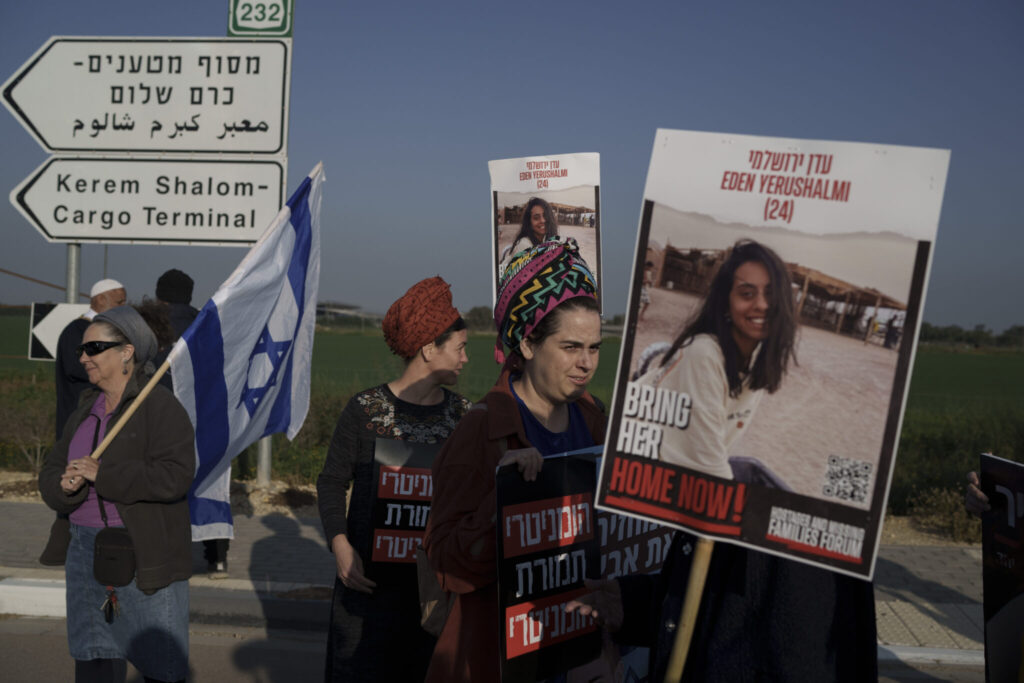
As Blinken arrived in Israel, exchanges between Israel and Hezbollah continued their spiral since last week’s killing of Hamas deputy leader Saleh Arouri in Beirut.
Hezbollah said its drone strike on the base in northern Israel on Tuesday was further retaliation for the killing of Arouri and of a senior Hezbollah commander in an Israeli bombing Monday.
Tuesday morning, an Israeli drone hit a car in southern Lebanon, killing three people inside, security officials in the area and the state news agency said. There was no immediate word on the identities of the three.
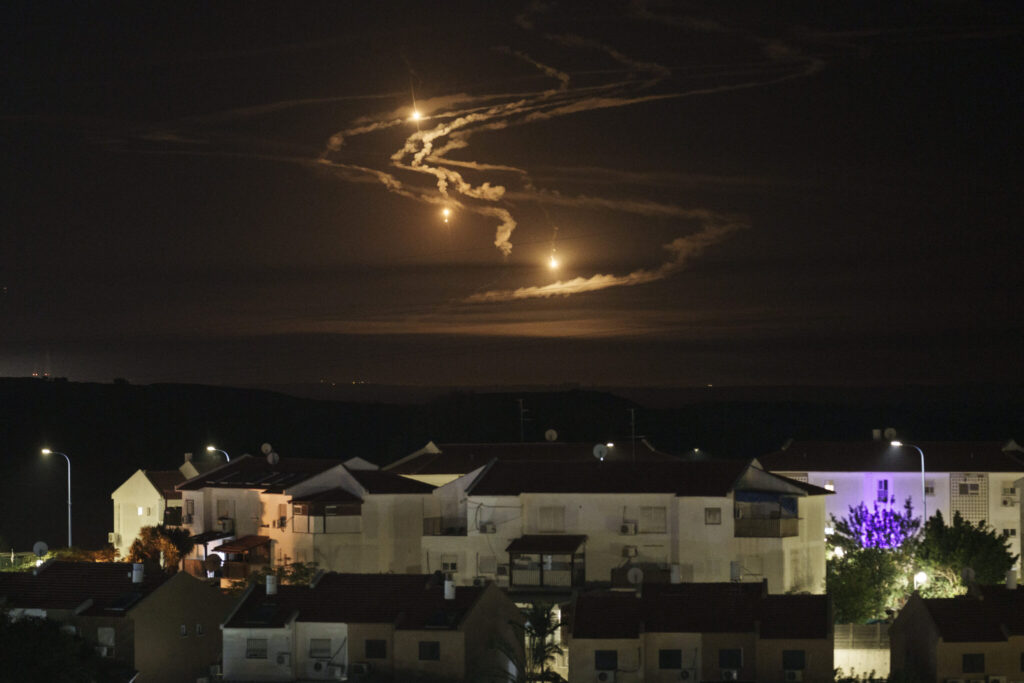
Israel has repeatedly warned that time is running out before it launches a campaign to end militants’ fire across the border.
U.S. officials have said they expect Blinken’s discussions with Netanyahu, the War Cabinet and other officials to be some of the most difficult on his current Mideast tour, his fourth since the war began,
Blinken said Monday that Saudi Arabia, Jordan, Qatar, the United Arab Emirates and Turkey have agreed to begin planning for the reconstruction and governance of Gaza once Israel’s war against Hamas ends. Those countries had previously resisted U.S. calls for post-war planning to begin, insisting that there must first be a cease-fire and a sharp reduction in the civilian suffering in Gaza.
Blinken did not offer specifics on potential contributions. Financial and in-kind support from the UAE and Saudi Arabia could be essential to the success of any plan.

